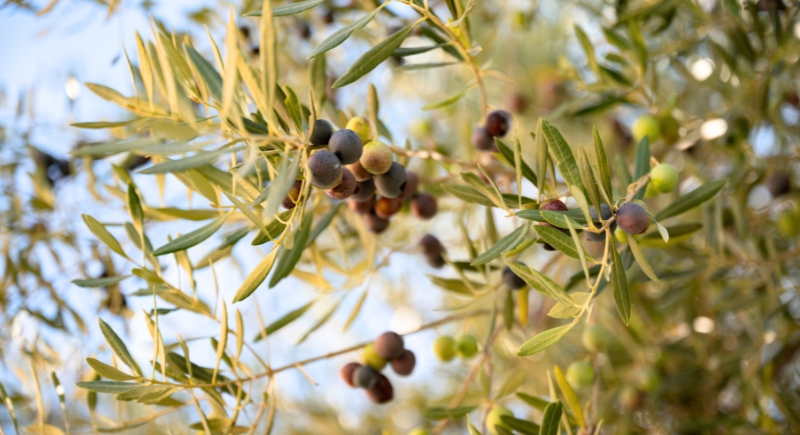The Surprising Similarities Between Green and Black Olives
People often have strong preferences when it comes to olives. Green olives are known for their sharp, briny flavor, while black olives are milder and smoother. They may seem very different, but they’re actually more similar than most realize.
Same Tree, Different Timing

Image via Canva/Gajus
Both green and black olives come from the same trees. The only real difference is when they’re picked. Green olives are harvested before they’ve fully ripened, which gives them a firm texture and a strong, salty bite. Black olives, on the other hand, are left on the tree until they’re ripe, which makes them softer and gives them a milder, buttery taste. It’s similar to how green bell peppers turn red when they ripen.
This ripeness factor also affects the chemistry inside the olive. Green ones are loaded with a bitter compound called oleuropein, which makes them pretty unpleasant if you try to eat them straight off the tree. Black olives naturally have less of it because they’ve matured, so their flavor is smoother and less harsh.
Processing Makes All the Difference
Neither green nor black olives make it to your plate without a bit of help. Olives are almost always cured to make them edible. Producers use methods like brining, fermentation, or lye treatments to wash away bitterness. Green olives typically get a lye soak before brining, which speeds up the process of breaking down oleuropein. Black olives that are allowed to ripen on the tree can sometimes skip this extra step and go straight into a salt brine.
Having said that, not all black olives are truly ripe. Many of the ones you’ll find in cans and jars at the grocery store are actually green olives that have been chemically treated to look ripe. These “California ripe” or “ripe-style” olives are darkened with an iron compound called ferrous gluconate. This works great for mass production, but doesn’t have the same depth of flavor as a naturally ripened olive.
How They Show Up in the Kitchen

Image via iStockphoto/pascal malamas
Green and black olives might grow on the same tree, but they play very different roles in food. Green olives are the bold ones, often used in martinis, antipasto platters, or stuffed with pimentos, cheese, or garlic. They bring tang and firmness, which is just what you need for recipes that call for strong, assertive flavors.
Black olives, being softer and gentler in taste, are excellent for pasta dishes, pizzas, dips, and spreads. They add a mellow, buttery note that blends in well with other ingredients.
A Few Health Notes
Both types of olives are packed with healthy fats, particularly the kind that support heart health and help reduce inflammation. They’re also a source of vitamin E, an antioxidant that protects your cells.
Green olives usually have more sodium thanks to their curing process, which isn’t ideal if you’re watching your salt intake. Black olives tend to have less sodium but carry a little more fat, making them more calorie-dense. They also have more iron, which helps with healthy blood function, while green olives edge them out in polyphenols, plant compounds linked to brain health and protection against some chronic diseases.